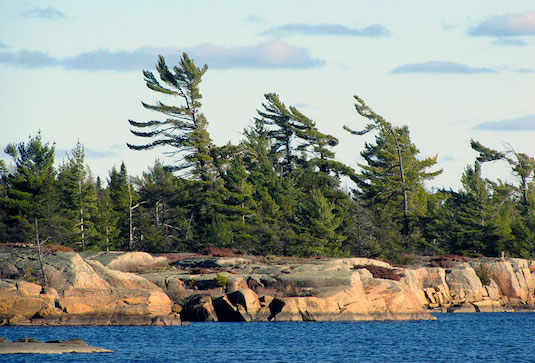Clans and Families - Yesterday and Today
Clans/Totems
The centre of the Anishinabek creation story is the raft which is Michilimackinac Island in the strait between Lake Huron and Lake Michigan. This Island is where the First Animals named in the creation story ventured out to find and transform their own Country. For instance, story has it, upon leaving Lake Huron, Beaver went traveling up French River, and created lakes, rapids, portages and dams along the way. During his lifetime, Beaver populated his country with many Beaver children.
During his last days, Beaver traveled to Lake Nippissing as his final resting place. Upon his death, human children emerged from his remains. This is the case for many of the totems we know today, and has been recognized throughout history. Laws, governance, land use and occupancy practices and other social customs and mores were strongly entrenched in ancient traditions. For example, marriage within clans was a serious taboo.
For example, in one story, recorded by Warren, when the newcomers arrived, they were met by a Crane and Bear - totem families who received them. “...when the white man first came in sight of the ‘Great Turtle’ island of Mackinaw, they beheld walking on the pebbly shores, a crane and a bear who received them kindly, invited them to their wigwams, and placed food before them.”
Clans are closely related to Anishinabek identity, and totems are passed down through the father. In her report, Darlene Johnston states, “In tracing the connection between Anishnaabek [sic] peoples and Great Lakes landscapes, it is vital to attentive to the evidence of totemic identity. It is important to understand that totemic identity is a matter of inheritance, not choice. Anishinaabeg [sic] totems are patrilineal, which means that children are born into the totem of their father.” Furthermore, any person belonging to the same totem or clan was considered to be a close relative, and remains so today.
Early documents from the Jesuits in 1640 make reference to totems, including Kinounchepirini (Pike People) who were located along the Ottawa River. Between the Hurons and French River were the Ousaouarini (possibly Birch Bark People), the Outchougai (Heron people) and the Atchiligouan (possibly Black Squirrel). The Amikouai (nation of the Beaver) were located north of the French River, the Oumisagaiat the Mississagi River and the Baouichtigouian, ‘the nation of the people of Sault, at Sault Ste. Marie.
Later in the decade, another account from the Jesuits, indicates several more clans, along the south shore of Lake Huron: Ouachaskesouek, Nigouaouichirinik (possibly Carp), Outaouasinagouek (Black squirrel), Kichkagoneak (possibly Bear), and Ontaanak (who are allies of the Hurons).
Clans and Families
Watch for new information on our historical family connections with the Clans, a listing of all the known Clans and historical and present day families, and how to trace the connection with the families who presently make up our Band.
We will continue to seek sources of any information and strive gain as much information from our own Elders and Families.
Watch for new suggestion on How You Can Help to fill in the blanks in our history.



















